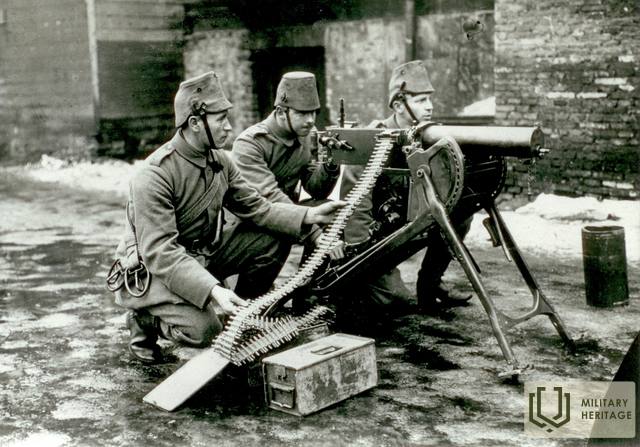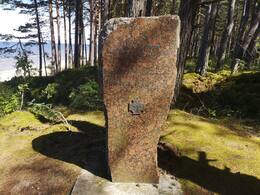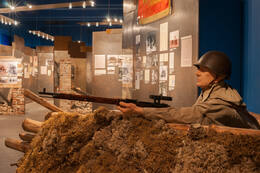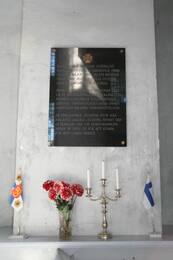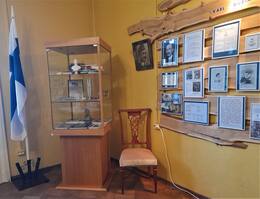О финских егерях в Латвии
История финских егерей интересна тем, что очень похожа на судьбу латвийских солдат в Первой мировой войне и их огромную роль в формировании национального государства. Для финнов Первая мировая война также предоставила возможность заложить основы независимости Финляндии и создания ее армии. Источник описывает событие, когда в Латвии открывают памятник финским егерям.
«7 сентября этого года в Клапкалнциемсе на берегу моря ок. В 15 км от станции Смарде покоились 5 стрелков 27-го финского егерского батальона: Ф. В. Хейнонен, Виктор Ками, Эмиль Кантола, Эйкарс Минти и Конрад Перссон, которые участвовали в Великой мировой войне добровольцами и пали в 1916 году. Правительство Финляндии хотело воздвигнуть памятник этим борцам и таким образом отдать дань уважения тем, кто надеялся завоевать свою независимость. Поскольку Латвийское общество обороны уже построило памятник финским стрелкам возле дома Галини (в районе Олайне) в 1925 году, Союз финских стрелков через местное финское посольство обратился к обществу с просьбой построить памятник в Клапкалнциемсе, чтобы способствовать благосостоянию. Латвийско-латвийские отношения. Гранитные элементы памятника были привезены из Финляндии, и их пришлось с большим трудом перевезти по плохим дорогам на приморский поселок Клапкалнс. После нескольких недель работы и значительных затрат памятник был установлен, а его окрестности украшены. в день хиротонии (7 сентября) в Клапкалнс отправились: посол Финляндии в Латвии Хининен, начальник финского генерального штаба полковник Валлениус, который также является председателем Союза финских стрелков; Начальник информационного отдела, лейтенант Реландерс, военный представитель, полковник Хельсинки; Милосердные финские сестры и охранники Мунк и Ромпанен; Заместитель начальника штаба командующего нашей армией полковник Хартманис с адъютантом, капитаном Калниньшем и членами правления Латвийского общества обороны. На дороге возникали проблемы с автомобилями, которые выходили из строя из-за плохих дорог, не могли переходить сломанные мосты и съезды. Гонщики прибывают на вечеринку с опозданием на 3 часа. Жители собрались в большом количестве. Наши и финские флаги развеваются в высоких углах в четырех углах памятника; шесты украшают гирлянды и цветы, сделанные прилежными альпинистами, несмотря на ненастную дождливую погоду. Торжества открыл посол Финляндии Хининен на финском и немецком языках, объяснив значение памятника и искренне поблагодарив Правление Латвийского общества обороны за его усилия по установке памятника. Посланник возлагает роскошный венок с финской национальной лентой. Затем полковник Валениус говорит и завершает свою речь на латышском языке следующими важными словами: Граждане Латвии, вы освободили свою землю в ожесточенных боях, как и мы, финны, так что памятник напоминает нам о ценности наших свобод и нашего драгоценного приобретения. Мы никогда не откажемся от нашей независимости ».
Следует отметить, что начальник финского генштаба полковник Валлениус и подполковник. Реландеры оба сражались в рядах егерей и прямо на этом поле битвы, поэтому откладывали и вспоминали свои сражения. Вдали финские гости искренне поблагодарили владелицу местного дома Саклаушку Алвину Гуня и ее мужа за неусыпную заботу о кладбище и по-прежнему возлагают на них эти обязанности. В Ригу участники праздника вернулись через Тукумс, потому что там дорога лучше ».
Газета «Гвардия». Открытие памятников павшим финским стрелкам в Клапкалнсе. 1929 г.
Связанная хронология
Связанные темы
Связанные объекты
Памятник в память о финских егерях-саперах
Находится в Энгурском районе, на обочине автомагистрали A10, недалеко от паба Smārde.
На месте, где в 1916 году на поле напротив трактира «Смарде» произошла битва при Смарде, установлен мемориал. В боях в составе немецкой армии принимала участие рота финских саперов-егерей (~200 человек). День запаха стал официальным праздником военных инженеров финской армии, который отмечается до сих пор.
Финские егеря — подразделение немецкой армии, сформированное во время Первой мировой войны. Она состояла в основном из национально настроенных финских добровольцев, покинувших территорию Российской империи, Финляндию. Битва при Смарде была одним из важнейших наступательных сражений финских егерей, где применялась новая тактика того времени.
Через месяц после инцидента русская армия атаковала немецкую армию под Смарде. Латышские боевые части провели разведку вокруг Смарде, построили через болото подъездную дорогу «Latviešu ceļš» и приняли участие в боях. В боях пало около 300 латвийских бойцов. Подобно финским егерям в немецкой армии, латышские стрелки в русской армии были основателями своих национальных государств и армий.
Военный музей Латвии
Военный музей Латвии находится в Старой Риге, недалеко от Памятника Свободы, в Пороховой башне - старинном оборонительном сооружении. В музее 11 экспозиций. На выставке представлено различное оружие, документы, униформа, награды и другие предметы, относящиеся к войне и повседневной жизни солдат. Военный музей Латвии - один из старейших музеев Латвии. Его история началась во время Первой мировой войны. Коллекция музея создана в основном из предметов с полей сражений и личных вещей солдат. После создания Латвийского государства основной целью музея стало создание экспозиции о военной истории Латвии и активной роли ее жителей в защите своей земли.
В 1937 году музей был расширен за счет пристройки и технически был одним из самых современных музеев того времени в Европе. Пороховая башня - одна из бывших крепостных башен Риги. Упоминается в 1330 году как Песчаная башня. В 1621 году, когда Рига была окружена шведскими войсками, башня была разрушена. В 1650 году была построена новая башня для хранения пороха и оружия. После сноса городских укреплений Пороховая башня - одно из самых ценных свидетельств оборонительной системы Риги.
Мемориальная доска финским егерям в Свято-Троицком соборе в Лиепае
Мемориальная доска, посвященная финским егерям, находится в Лиепайском Свято-Троицком соборе по адресу Lielā iela 9.
Финские егеря были подразделением Германской империи, сформированным из добровольцев из Финляндии, которое под названием 27-го Королевского прусского егерского батальона участвовало в боях Первой мировой войны на Восточном фронте в Латвии в 1916-1917 годах.
Во время Первой мировой войны Великое княжество Финляндское входило в состав Российской империи, и многие финны желали победы Германии в войне, чтобы способствовать созданию независимого государства. 20 ноября 1914 года в Хельсинки было основано Движение за независимость Финляндии, которое также планировало сформировать вооруженные силы независимого государства. Когда в январе 1915 года правительство Германии подтвердило свою готовность обучать финнов, начался набор добровольцев, и к весне 1916 года почти 2 000 солдат были расквартированы в Германии и получили название 27-го Королевского прусского егерского батальона.
С июня 1916 года батальон находился на Рижском фронте, после чего был переведен в Лиепаю до марта 1917 года. После Февральской революции Российская империя начала распадаться, и 6 декабря 1917 года парламент Финляндии провозгласил независимость.
13 февраля 1918 года батальон присягнул на верность Финляндии в церкви Святой Троицы в Лиепае. 15 февраля 1918 года батальон покинул порт Лиепая, чтобы вернуться домой в порт Васа и принять участие в гражданской войне в Финляндии против красных, устроивших государственный переворот 27 января 1918 года. Хорошо обученные и опытные в боях егеря составили ядро финской национальной армии, и многие из них стали командирами во время Второй мировой войны.
Флаг батальона, освященный в церкви Святой Троицы, стал первым флагом независимой Финляндии.
Коллекции Априкского музея и направления деятельности красных партизан
В усадьбе находится музей, экспонаты которого рассказывают о древней истории края.
В музее представлена экспозиция о финском военном деятеле Карле Густаве Маннергейме – 175 музейных предметов, интерактивный стенд «К.Г.Маннергейм и Априки» (на трех языках – латышском, английском и финском) с 6 разделами – об усадьбе Априки, о К.Г.Маннергейме. как полководец в Зимней войне, как вождь сражений за свободу Финляндии и о его связи с априкаями.
В музее также представлены предметы времен Второй мировой войны с символикой немецкой и Красной Армии, а также карта - районы деятельности красных партизан и описания красных партизан.
Ансамбль здания усадьбы Априкку (Априккен) в стиле барокко образовался у реки Алоксте в 18 веке. сначала. 20 век в начале владельцем усадьбы является Карл Густав Маннергейм, впоследствии ставший президентом Финляндии, и известен как автор легендарной линии Маннергейма - системы укреплений во время Зимней войны.




